
Villiers
A small town in the Free State on the banks of the Vaal river. GPS coordinates: 27.0288°S 28.599164°E elevation: 1516m.
History
First there was a drift, then came the post office. In 1882 there was a request to the Volksraad to open a post office there near the drift over the Vaal. Villiers was proclaimed by F.W.Reitz (the president of the Free State at the time) in 1891. It got its name from the owner of the farm on which the town was laid out, L.B.de Villiers.
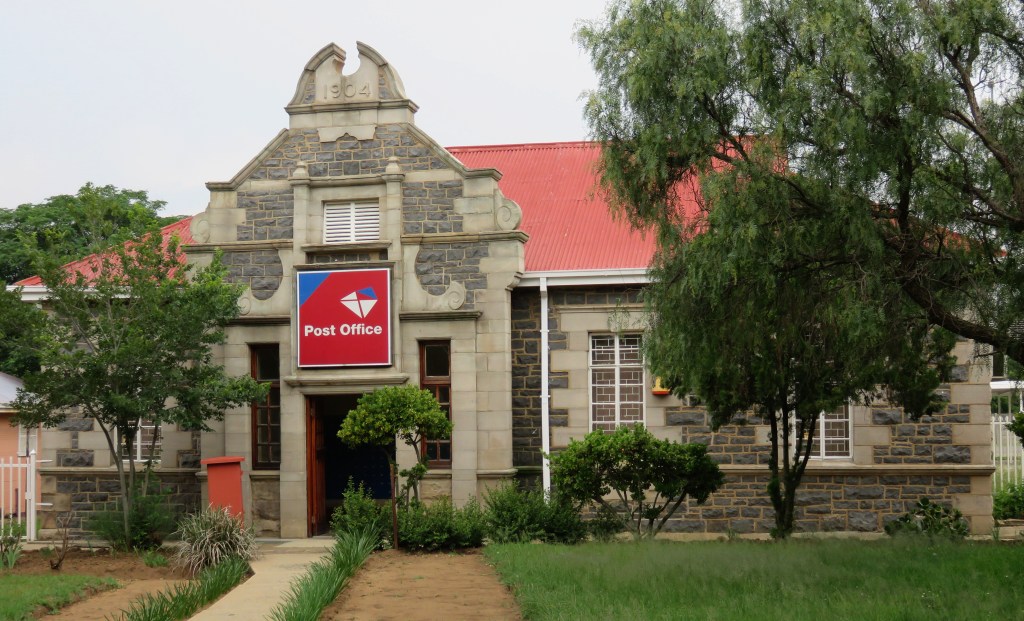 By the turn of the century (19 to 20) it had several shops, a police station, a jail, a hotel, a post office and a school.
All the buildings were destroyed by the British during the Boer War, only the jail remained. The town was quickly re-built and expanded after the war. Many of the beautiful sandstone buildings originated from then. Like the post office built in 1904.
By the turn of the century (19 to 20) it had several shops, a police station, a jail, a hotel, a post office and a school.
All the buildings were destroyed by the British during the Boer War, only the jail remained. The town was quickly re-built and expanded after the war. Many of the beautiful sandstone buildings originated from then. Like the post office built in 1904.
In 1917 municipal status was granted.
Drift and Bridge
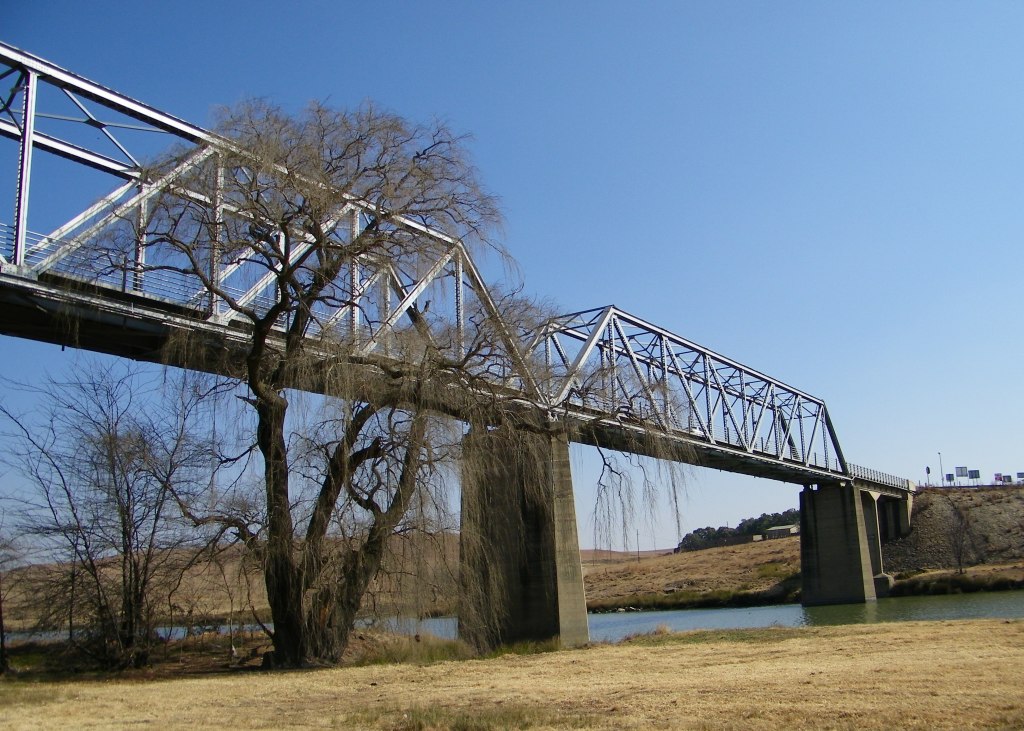
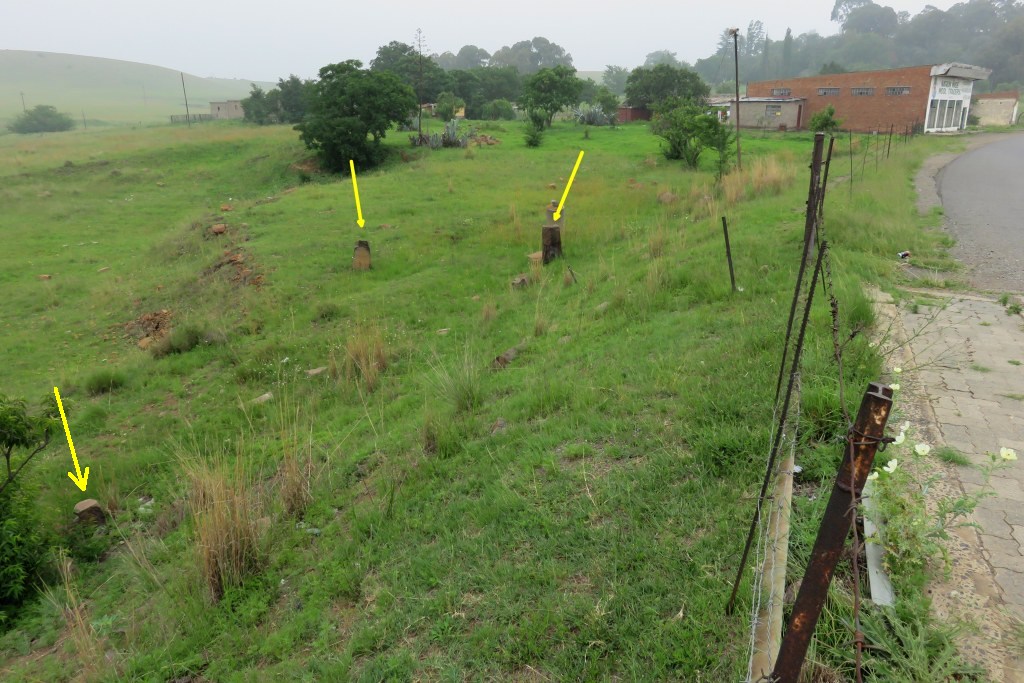 The drift (a place where the wagons could cross the river) was there long before the town was established. On the Jeppe map of 1879 the drift is possibly shown as Sand Drift. Its difficult to imagine a drift when looking at the water level now, one has to remember that the Vaal Dam pushes up the river and the water is thus much deeper now.
The drift (a place where the wagons could cross the river) was there long before the town was established. On the Jeppe map of 1879 the drift is possibly shown as Sand Drift. Its difficult to imagine a drift when looking at the water level now, one has to remember that the Vaal Dam pushes up the river and the water is thus much deeper now. 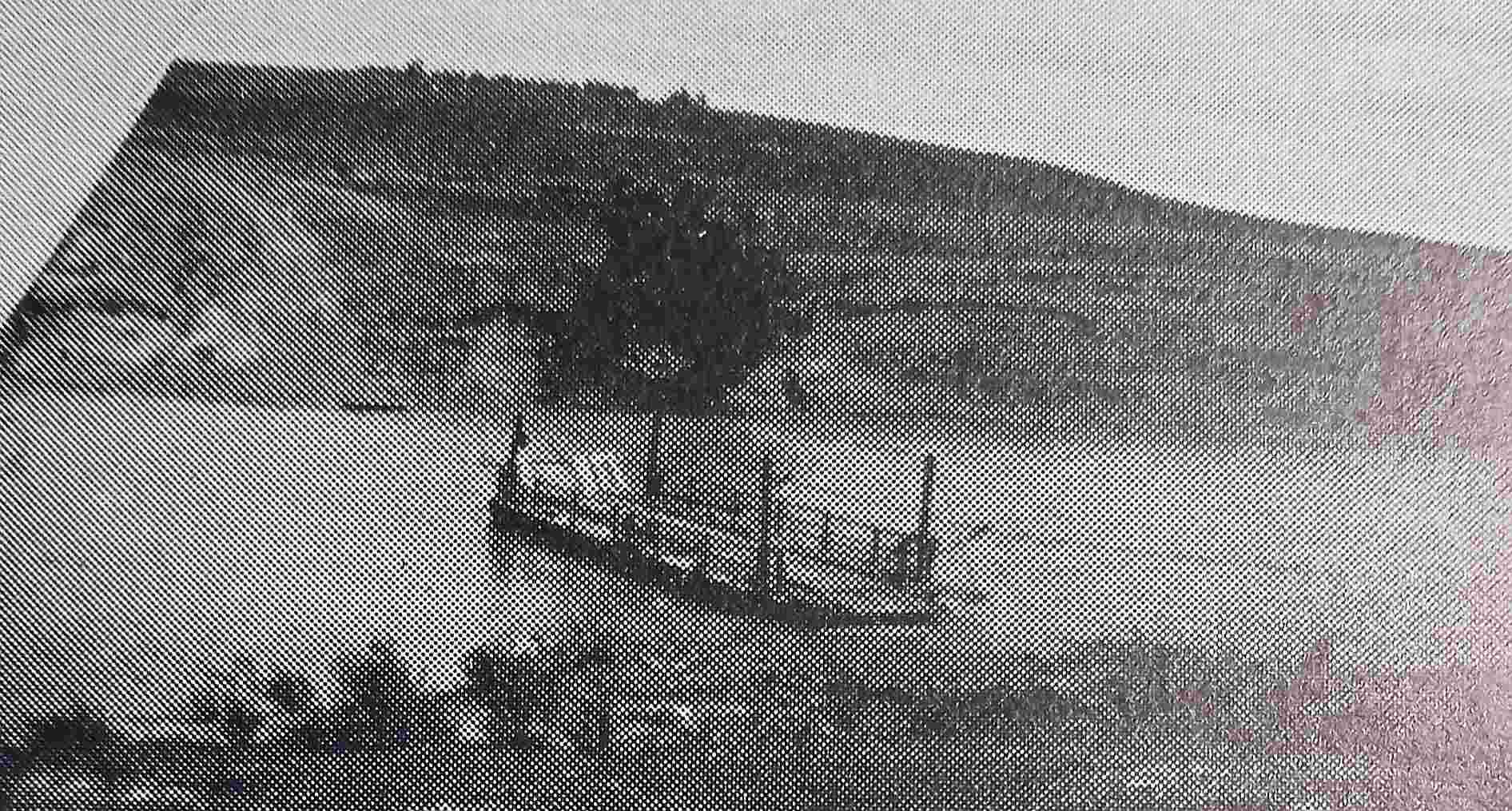 The drift was where the bridge is now, the stones demarcating the road are still visible as shown in the picture. During the rainy season it often happened that the drift was not passable. It caused some hardship for the traders and the transport riders. Thus in 1914 a ferry service was installed, a pont, so that wagons and livestock could be ferried across. The picture shows the pont in operation, from ref 5. The fee for taking a wagon across was 10 Schilling.
The drift was where the bridge is now, the stones demarcating the road are still visible as shown in the picture. During the rainy season it often happened that the drift was not passable. It caused some hardship for the traders and the transport riders. Thus in 1914 a ferry service was installed, a pont, so that wagons and livestock could be ferried across. The picture shows the pont in operation, from ref 5. The fee for taking a wagon across was 10 Schilling.
A few metres higher up from here was the costumes building, this used to be an international border between the Free State and the Zuid Afrikaanse Republic and later on an inter colonial border between the Orange River Colony and the Transvaal.
Railway Station
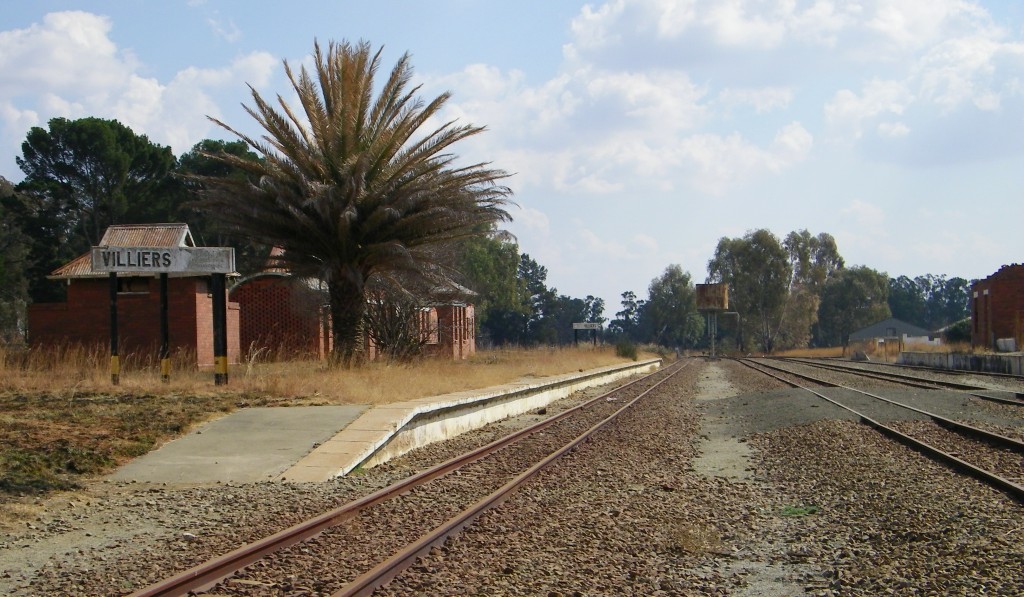 The railway line reached Villiers from Frankfort in 1925. The station is not in use and the station building is a ruin, the tracks are still there. Further up north we know that a few kilometres of the track have been stolen.
The railway line reached Villiers from Frankfort in 1925. The station is not in use and the station building is a ruin, the tracks are still there. Further up north we know that a few kilometres of the track have been stolen. 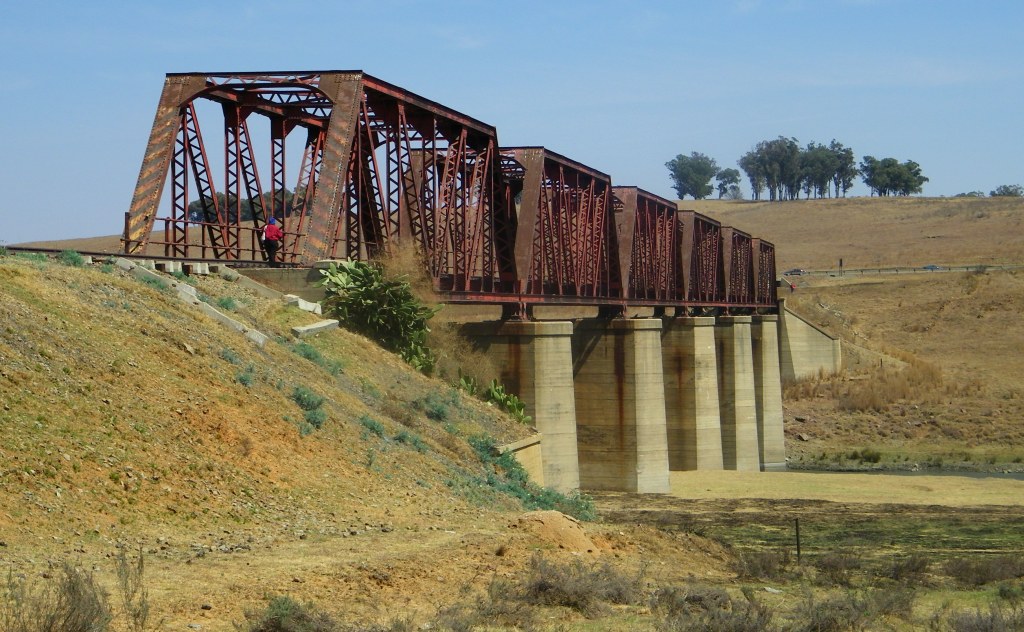 The picture on the right shows the rail bridge over the Vaal river, it is nowadays used as a pedestrian crossing.
The picture on the right shows the rail bridge over the Vaal river, it is nowadays used as a pedestrian crossing.
Churches
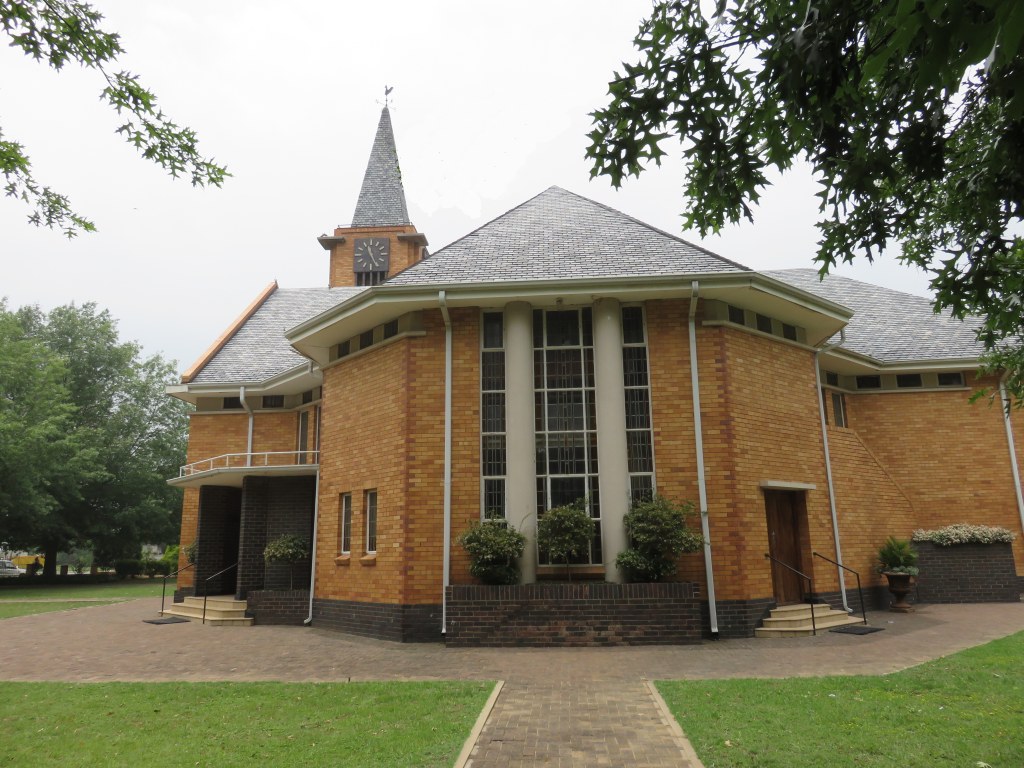
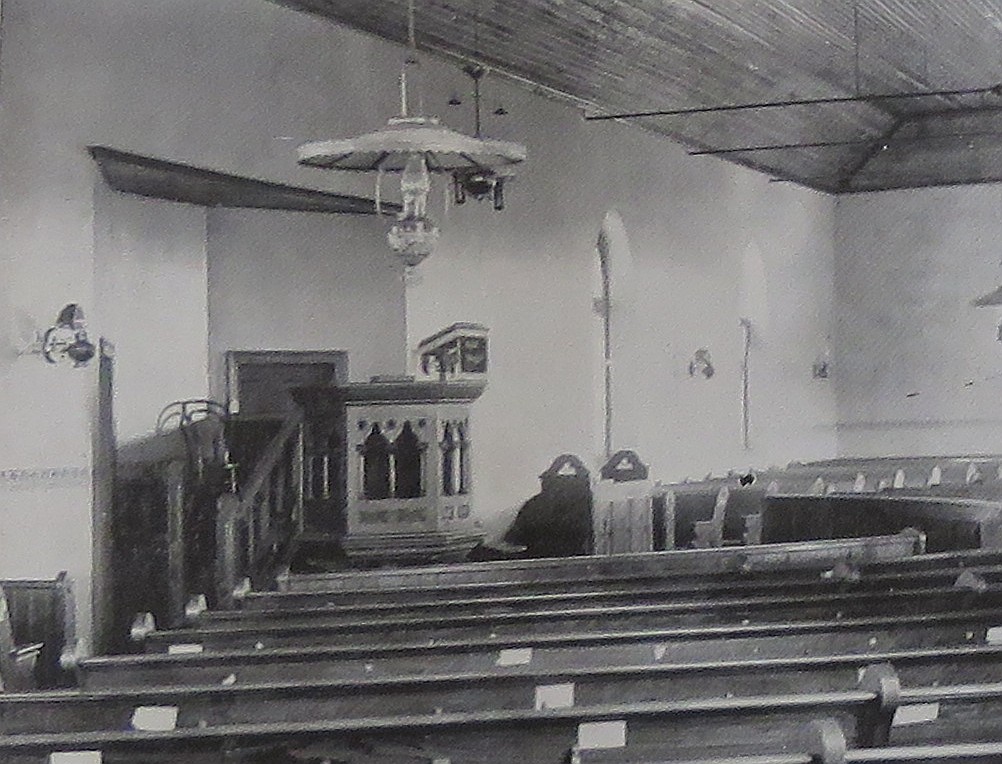 The most central and the biggest church is the NG church. For a change and somewhat unusual for the Free State is that this church was not built using sandstone. It was inaugurated in 1940, the architects were Geers & Geers.
The most central and the biggest church is the NG church. For a change and somewhat unusual for the Free State is that this church was not built using sandstone. It was inaugurated in 1940, the architects were Geers & Geers.
The congregation was spawned off from Vrede in 1907. A church was built soon after, in Ref 4. there is a picture of the inside of the church as it looked in 1917. Interesting that the layout of the benches in a semi circle is very much the same as today in the newer church.
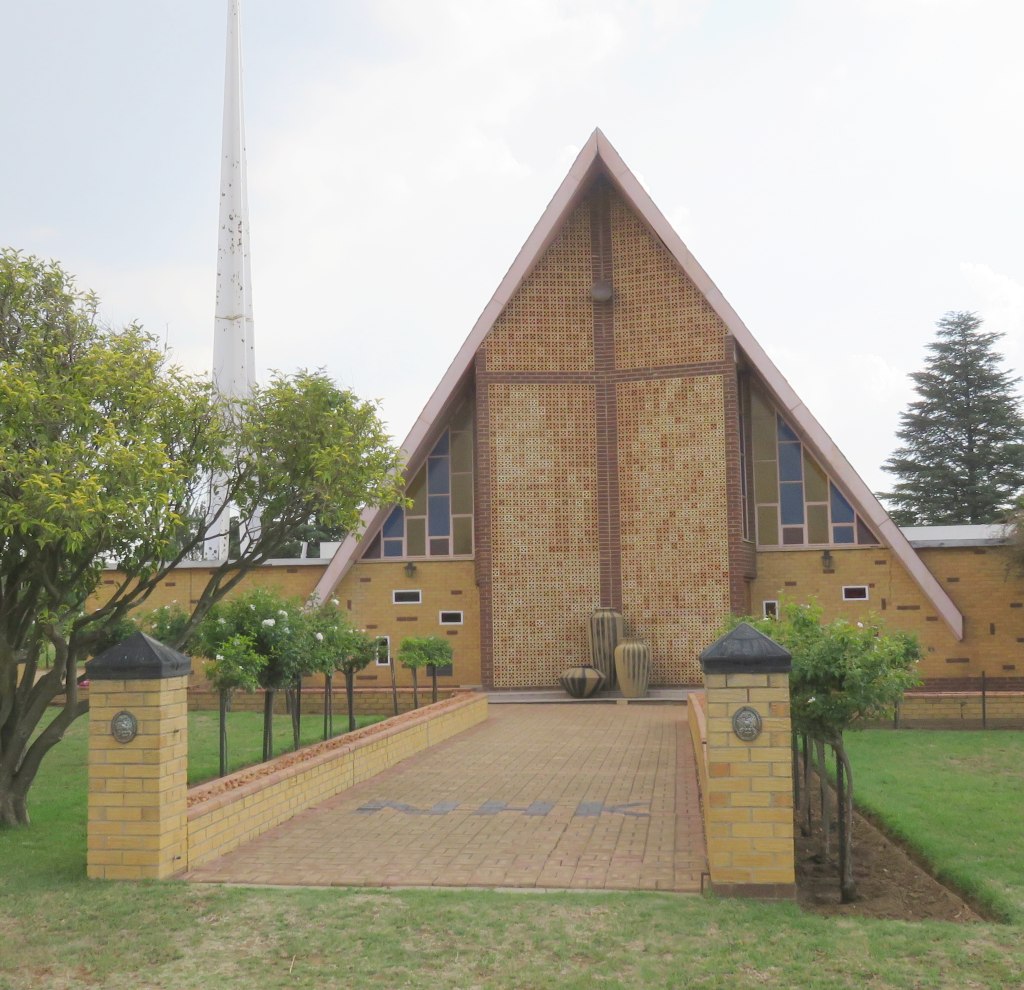 Another church, a few blocks away is the Herformde Kerk, it is smaller and more recent. It was built in 1971.
Another church, a few blocks away is the Herformde Kerk, it is smaller and more recent. It was built in 1971.
School
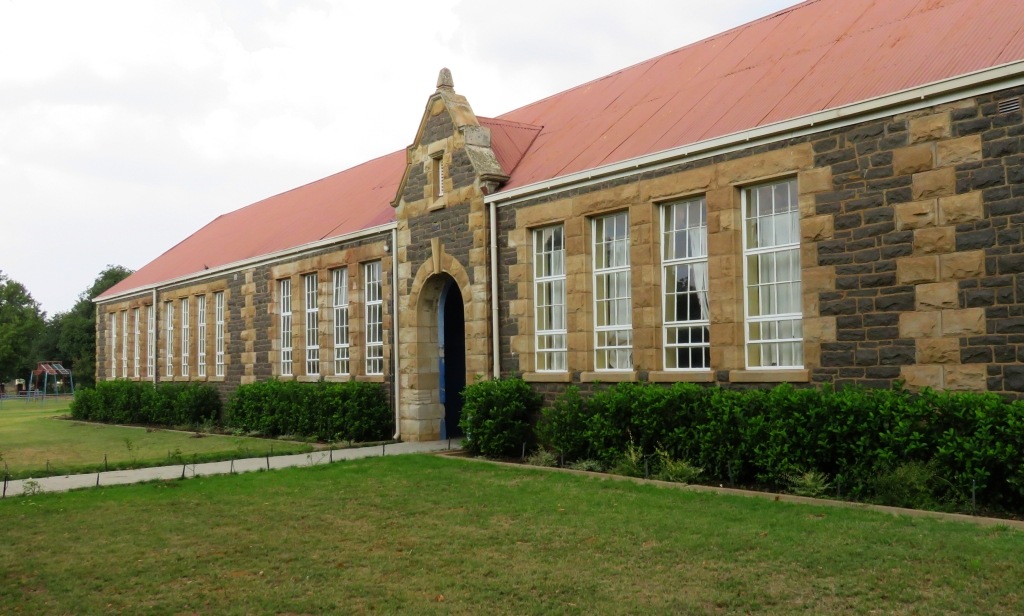 An other one of those pleasing sandstone buildings. Though the black stone is not sandstone, it looks like basalt.
An other one of those pleasing sandstone buildings. Though the black stone is not sandstone, it looks like basalt.
I have not been able to find out what is happening in that school nowadays. It certainly is still in use.
Jail
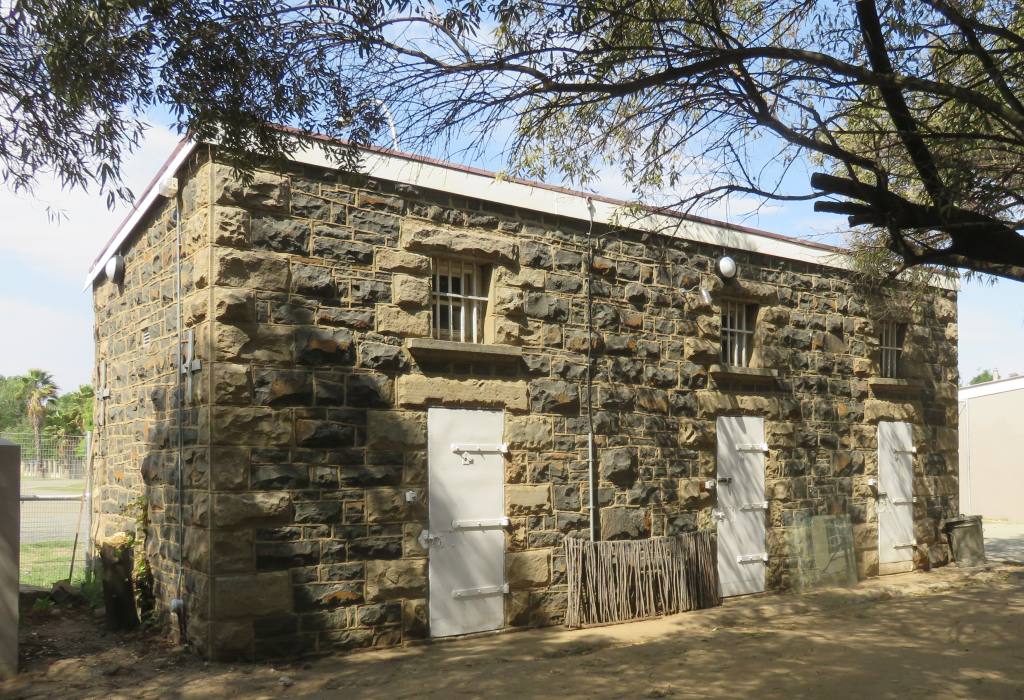 It was the only building left standing after the Boer War. There is a story about this jail told in one of Ludwig's books (Ref 3). During the Boer War two joiners had been captured in August 1901. Joiners is a term given to citizens of the Boer republics that had surrendered and actually joined the British forces as scouts. The subject of joiners, verraaiers (traitors), handsoppers (hands uppers) even today, 110 years later, is still a very emotional subject.
But back to the story. Van Emmenis and Bouwer were both found guilty of high treason and sentenced to be executed. The sentence had to be confirmed by the Minister of Justice and the Attorney General, Messengers were sent to obtain those signatures. This took a few weeks and in the meantime the condemmed were kept in the Villiers prison.
It was the only building left standing after the Boer War. There is a story about this jail told in one of Ludwig's books (Ref 3). During the Boer War two joiners had been captured in August 1901. Joiners is a term given to citizens of the Boer republics that had surrendered and actually joined the British forces as scouts. The subject of joiners, verraaiers (traitors), handsoppers (hands uppers) even today, 110 years later, is still a very emotional subject.
But back to the story. Van Emmenis and Bouwer were both found guilty of high treason and sentenced to be executed. The sentence had to be confirmed by the Minister of Justice and the Attorney General, Messengers were sent to obtain those signatures. This took a few weeks and in the meantime the condemmed were kept in the Villiers prison. 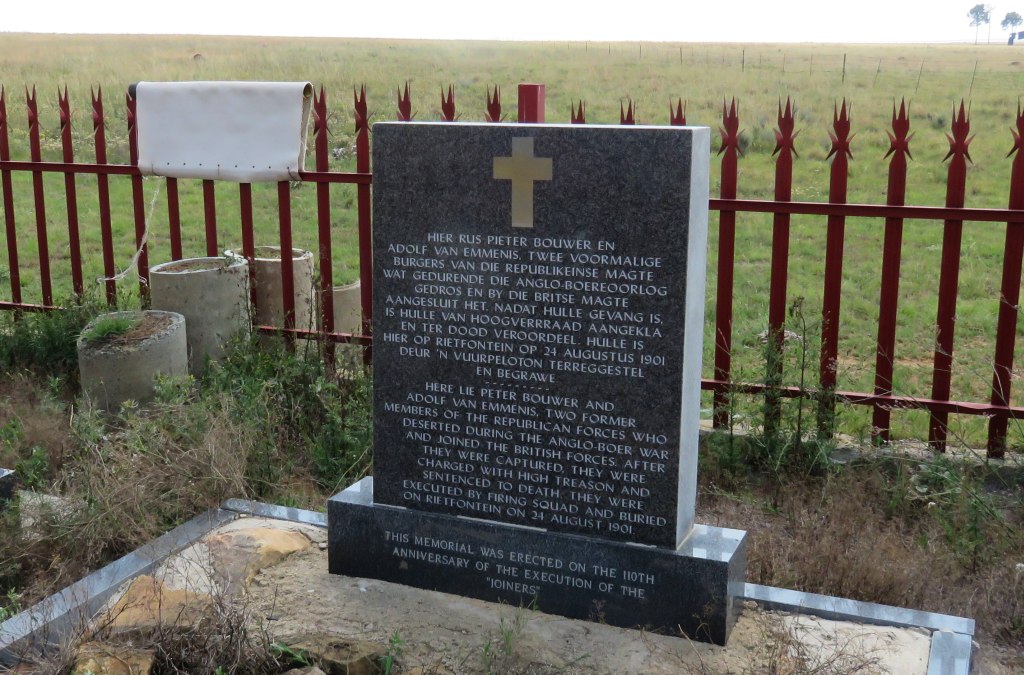 On a few occasions the door was left unbolted and the prisoners could have escaped, but they didn't obviously thinking that this was a trap and they would be shot once out of jail. This fear was not unfounded since it did happen near Paul Roux where escaping prisoners were shot.
On a few occasions the door was left unbolted and the prisoners could have escaped, but they didn't obviously thinking that this was a trap and they would be shot once out of jail. This fear was not unfounded since it did happen near Paul Roux where escaping prisoners were shot.
The messengers arrived back with the necessary signatures and the two were executed. The grave stone reads:
Here lie Peter Bouwer and Adolf van Emmenis, two former members of the republican forces who deserted during the Anglo-Boer war and joined the British forces. After they were captured, they were charged with high treason and sentenced to death. They were executed by firing squad and buried on Rietfontein on 24 August 1901.
This memorial was erected on the 110th anniversary of the execution of the "joiners".
Something else about this jail is that Nelson Mandela occupied a cell there. Apparently it was an overnight stay, I am still finding out details, watch this space!
References
1. Standard Encyclopaedia of Southern Africa, 1973
2. E.F.Sandeman, Eight month in an Ox-Wagon, Griffith and Farran, 1880
3. Ludwig Ankiewics, From the Suikerbosrante down to the Vaal River, Bienedell Uitgewers, 2015, ISBN Nr: 978-0-620-63453-3
Ludwig Ankiewics has published a number of books, four, that deal with local historical events in the area bordered roughly by Heidelberg, Greylingstad and Viliers.
4.: "Ons Kerk Album van Hollandsche Kerken en Leeraren", publisher: unknown, printed in the 1920's
5.: Kroniek van 'n geseënde Driekwarteeu, Die geskiedenis van die Nederduitse Gereformeerde Kerk van Villiers (1907-1982)